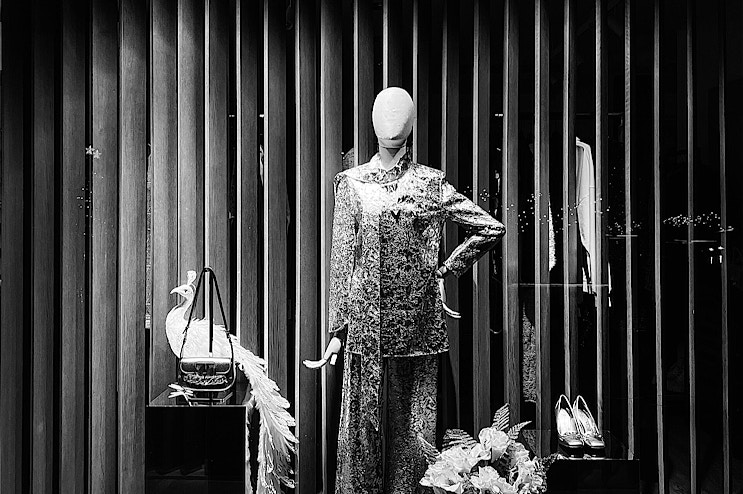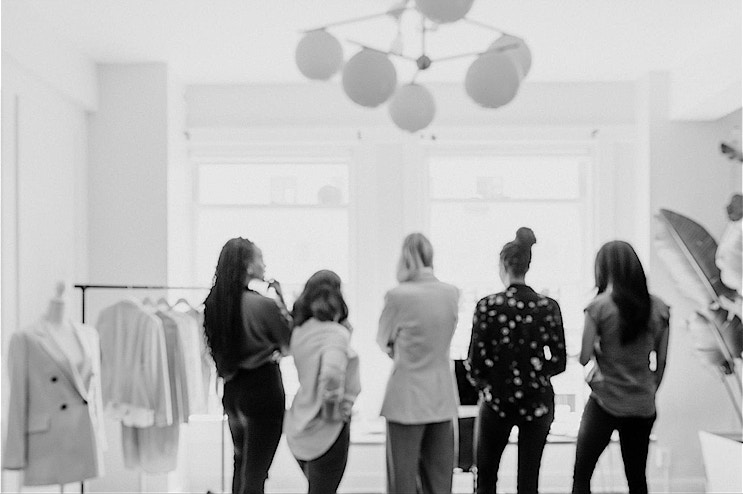Customer loyalty begins long before a points program or a newsletter. It takes shape in the way a space presents itself, evolves, and communicates. For this reason, in the retail world, visual merchandising is a central element in building lasting relationships.
Creating spaces that are simply pleasant to look at is only part of the job: what really matters is orchestrating visual and functional choices that foster continuity. A loyal customer recognizes an aesthetic code, internalizes it, and chooses to return because they know what to expect and, at the same time, they know they will find something new.
In this article, we explore the connection between visual design and customer loyalty, starting from a concrete question: how do you build an experience that keeps customers coming back?
The importance of customer loyalty
Loyalty is one of the most solid investments a retail store can make, because it opens the door to a relationship that grows over time and continuously generates value. Those who come back do so with a different attitude: they already know the environment, navigate the products more confidently, pay attention to details, and develop a direct connection with the brand’s identity.
In a market where acquisition costs are rising and the range of options keeps multiplying, retaining those who have already chosen you allows you to build a stable, responsive base that is open to listening. A loyal customer buys more regularly, explores new categories, approaches seasonal collections with curiosity, and responds better to every update in the assortment.
This effect is amplified in sectors where the visual experience plays a central role. Customers return to the store not just for the product, but for everything that surrounds it: a sense of aesthetic continuity, recognition, and familiarity that turns the physical space into a point of reference.
In this process, visual merchandising becomes a concrete ally, through the consistency of display choices, the care taken with narrative rhythm, and the steadfastness of visual codes. In this way, each visit strengthens the bond between customer and brand, thanks to an environment that speaks, suggests, and invites them to return.
Investing in customer loyalty therefore strengthens the overall efficiency of the store, increases purchase frequency, amplifies word of mouth, and fosters the creation of a real community around the brand. It is a strategy that gives structure to growth and creates room to evolve, without ever losing the customer along the way.
Loyalty strategies applied to Visual Merchandising
Building customer loyalty through visual merchandising requires a design approach that goes beyond mere aesthetics, focusing instead on continuity, recognizability, and attention to detail. Every element of the display must contribute to making the store easy to read, distinctive, and capable of driving return visits. To achieve all this, the most effective strategies must stem from an integrated vision of the space and the intent to create visual habits that accompany the customer over time.

Among the concrete actions that strengthen loyalty:
- Visual continuity over time: color palettes, materials, lighting, and consistent layouts help build a recognizable identity. Maintaining this consistency even during seasonal changes reinforces familiarity with the space, making the store immediately recognizable even when the assortment changes.
- Controlled introduction of new elements: capsule collections, seasonal collaborations, pop-ups, or themed window displays offer fresh stimuli without distorting the brand’s visual language. This keeps attention alive and gives the customer a reason to come back.
- Distinction between stable and flexible areas: organizing the space into zones with different update frequencies allows for a balance between continuity and renewal. Permanent areas give solidity to the identity, while dynamic ones host new content and visual storytelling.
- Micro-environments with specific functions: dividing the space into themed areas, using variations in materials, fixtures, or lighting, helps guide the gaze and enriches the experience. Each area tells a story and encourages greater immersion.
- Timely and intelligent updates: even small interventions - a seasonal detail, a change in layout, the introduction of a new focal point - convey care and dynamism. This kind of calibrated movement suggests that the space is alive and makes each visit a different occasion.
The continuous application of these strategies transforms visual merchandising into a relational tool.
Emotional tools and visual rituals for loyalty
Alongside operational strategies, there is a subtler yet equally decisive dimension: the emotional one. Visual merchandising can also operate at this level, contributing to loyalty by creating sensory memories and recurring visual codes. This is a kind of design that works in depth, not always consciously perceived, yet strongly present in the customer’s experience.
When the environment conveys consistency and attention to detail, returning becomes a natural act. The presence of recognizable elements - such as a consistent color palette, a specific lighting atmosphere, or a coherent ambient fragrance - fosters familiarity and enhances the sense of belonging. Each visit reactivates a set of perceptions that invite customers to reconnect with what they have already appreciated.
The customer also comes back to see how the familiar scene has evolved, like a shop window that is refreshed monthly or an interior display that always highlights a new theme or detail, while keeping small, instantly recognizable elements unchanged.
When these visual and sensory signals are treated as an integral part of the design, the space gains character and depth, making recognition easier and strengthening the relationship.
How to measure the effectiveness of visual loyalty
Every strategy designed to build loyalty needs feedback. Observing how customers move through the space, how much time they spend there, and how they react to display changes makes it possible to assess the actual effectiveness of visual merchandising.
These data help to understand whether the visual choices are building a solid relationship or whether certain areas of the store require targeted interventions. They are not only useful for analysis: they allow you to adjust the design, keep it consistent over time, and enhance the experience without having to start over each time.
Among the most relevant signals to consider are:
- the increase in visit frequency,
- the stability of the paths customers repeat over time,
- the number of spontaneous interactions with themed displays or refreshed areas,
- the growth in average spend among regular customers,
- the direct request for items seen in the window or for products linked to specific installations.
These data, gathered through targeted observation and digital tracking tools, provide a clear picture of the space’s effectiveness. If a specific micro-environment attracts more attention, or if a display change prompts an earlier return visit, it means the design is achieving its goal: strengthening the bond between customer and store.
Integrating these indicators into design choices makes it possible to refine strategies and intervene more effectively. In this way, visual merchandising ceases to be a passive expense and becomes an active, measurable lever in building loyalty.
From the window to the relationship: visual merchandising as a loyalty project
Il punto vendita diventa così un riferimento visivo, ma anche un luogo in cui ritrovare attenzione, stile, struttura. La progettazione visiva non si esaurisce nella presentazione del prodotto, ma costruisce legami, abitudini, piccoli rituali che generano appartenenza.
Il visual merchandising si conferma quindi uno strumento di relazione, prima ancora che di esposizione. E chi lo progetta ha il compito di tenere insieme estetica e strategia, stagionalità e linguaggio, immediatezza e memoria.
Building loyalty through visual merchandising means creating spaces that communicate identity, offer continuity, and invite customers to return. The effectiveness of a project is measured in the quality of the repeated experience, in the ability to renew itself without losing recognizability, in the consistency with which every element of the store speaks to the customer.
The store thus becomes not only a visual reference, but also a place to find care, style, and structure. Visual design does not stop at product presentation; it builds connections, habits, and small rituals that generate a sense of belonging.
Visual merchandising therefore proves to be a relational tool, even before it is a display tool. And those who design it have the task of holding together aesthetics and strategy, seasonality and language, immediacy and memory.
If you’d like to use visual merchandising to build customer loyalty, contact us for a consultation!






